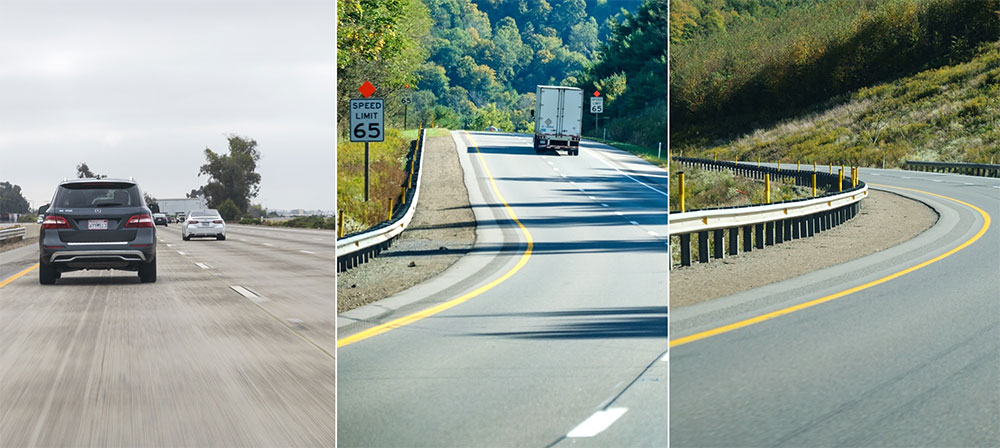
IIHS: Adaptive cruise control, Level 2 Pilot Assist ADAS often inactive on sharp curves
By onAnnouncements | Market Trends | Technology
Certain advanced driver assistance systems often might not be protecting the vehicle during sharper curves, new Insurance Institute for Highway Safety research has found.
The technological inactivity reported by the IIHS on Thursday means body shops in twisty areas might have more crashes to fix than prior ADAS effectiveness research suggests.
The IIHS studied two 2016 Land Rover Range Rover Evoques with adaptive cruise control and two 2017 Volvo S90s with both that technology and Pilot Assist, which combines both ACC and lane centering in a hands-on, eyes-on Level 2 autonomous driving experience. A S90 with Pilot Assist will drive itself and keep itself in a lane. However, the human driver remains responsible for the vehicle’s performance and must keep their hands on the wheel, supervise and be ready to take over at all times.
Autobraking cuts rear-ending crashes by 50 percent and injury crashes 56 percent, according to the IIHS. It hypothesized that adaptive cruise control “could boost those reductions” because of the greater following distances it fosters.
Lane departure warnings cut single-vehicle, head-on and sideswipe crashes by 11 percent and injury crashes 21 percent, according to the IIHS. It speculated that lane centering would improve this performance since the ADAS can actually step in and steer the vehicle out of danger too.
“We know that advanced driver assistance features may help prevent crashes, but obviously they can only do so if drivers use them,” IIHS senior research transportation engineer Wen Hu said in a statement. “This study suggests that these technologies will only be able to reach their full potential if drivers can trust them to handle curves.”
Perhaps particularly in the case of lane centering, which Hu said would have the greatest benefit during curves.
“The fact that Pilot Assist was frequently inactive on the sharpest curves is an important limitation, since the kinds of crashes lane centering could help prevent are more likely to occur on curves than on straightaways,” said Hu, the lead author of the new study.
The study examined four weeks of vehicle behavior on the four vehicles, which were driven by 39 people during the study period. The data was collected by the Massachusetts Institute of Technology’s Advanced Vehicle Technology Consortium.
“Analyzing the data, the researchers found that ACC or Pilot Assist were less likely to be active as curves became sharper,” the IIHS wrote Thursday. “In the Evoque vehicles, drivers were 72 percent less likely to use ACC on the sharpest category of curves (those with a radius smaller than 2,292 feet) than they were to use those features on straight road segments. In the S90 vehicles, drivers were 75 percent less likely to use Pilot Assist and 66 percent less likely to use ACC on the sharpest curves.”
The IIHS said the researchers didn’t know if the driver turned off the system or the technology disabled itself. Hitting the brakes turns off the adaptive cruise control ADAS, similar to regular cruise control, according to the IIHS. Lane centering might turn itself off if it can’t see lane markings or if a certain driver input is detected, such as moving the steering wheel or hitting the turn signal.
More information:
“Curves pose a bump in the road for driving automation”
Insurance Institute for Highway Safety, July 1, 2021
“Use of Level 1 and 2 driving automation on horizontal curves on interstates and freeways”
IIHS and Massachusetts Institute of Technology New England University Technology Center, July 2021
Images:
IIHS research found 2016 Range Rover Evoque adaptive cruise control and 2017 Volvo S90 Pilot Assist often weren’t active on sharp curves. (sumroeng/iStock)
From left, what the IIHS defines as straight, moderately curved and sharp-curve roads are shown. The IIHS has found certain Land Rover and Volvo advanced driver assistance systems to be often inactive on sharp curves. The organization didn’t know if this was the result of driver action or the ADAS turning itself off. (Provided by IIHS)

